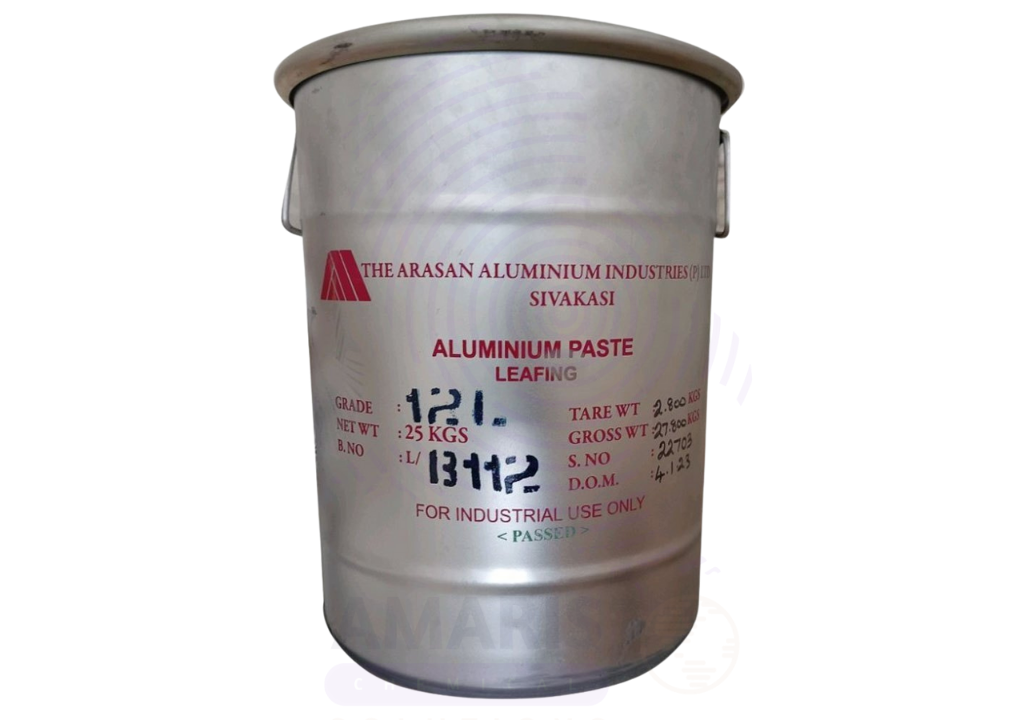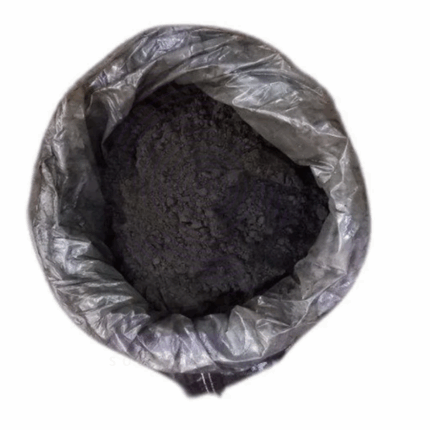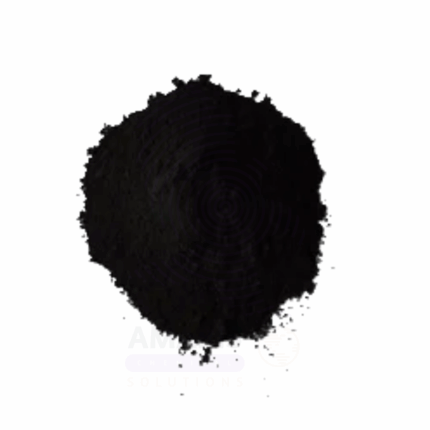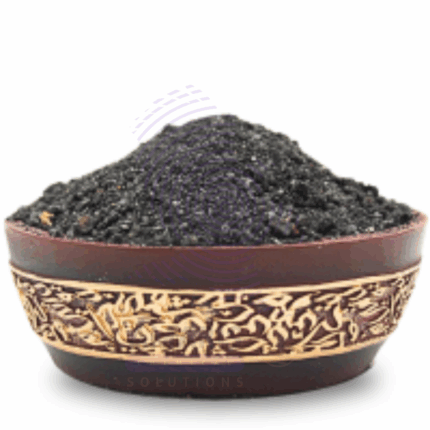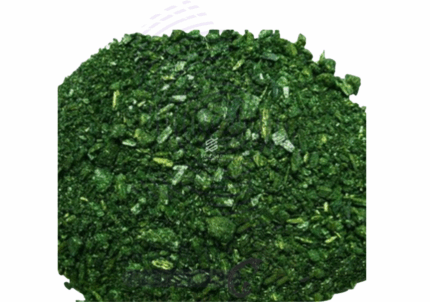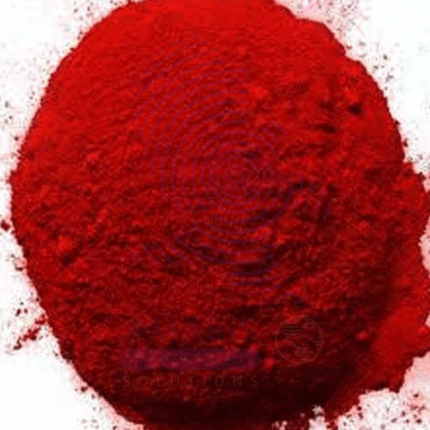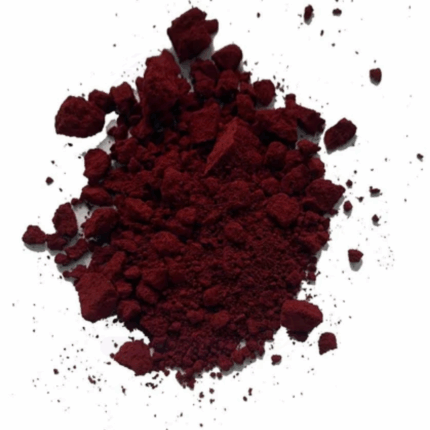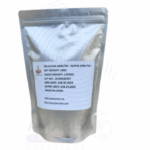
Alpha Arbutin
$ 2.21 Original price was: $ 2.21.$ 2.09Current price is: $ 2.09.
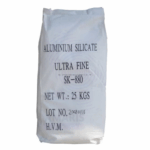
Aluminium Silicate
$ 1.64 Original price was: $ 1.64.$ 1.55Current price is: $ 1.55.
Alum Leafing Paste
$ 5.67 Original price was: $ 5.67.$ 5.56Current price is: $ 5.56.
Whatsapp Order
Alum Leafing Paste is a metallic pigment dispersion composed primarily of aluminum flakes suspended in a carrier solvent or paste medium. It is designed to produce a high-luster, silver-like metallic finish in coatings, inks, plastics, and decorative applications. The aluminum flakes in leafing pastes are specially treated to align parallel to the surface during application, creating a reflective, mirror-like effect. This paste is commonly used in industrial, automotive, packaging, and printing industries where brilliant metallic appearance and surface coverage are essentia
Categories: Dyes and Pigments, Pigments
Tags: Alum leafing paste, Aluminum paste, Decorative finishes, Metal effect pigment, Paints and coatings
Description
Table of Contents
Toggle
Alum Leafing Paste
Primary Uses
- Paints & Coatings Industry
- Provides high-reflective silver finish in solvent-based paints and lacquers.
- Used in protective and decorative coatings for metals, plastics, and wood.
- Ideal for industrial, automotive, and general-purpose metallic coatings.
- Enhances corrosion resistance in specific formulations.
- Printing & Packaging
- Used in gravure, screen, and offset printing inks for metallic effects on labels, packaging, and textiles.
- Creates bright, eye-catching print finishes on paper and synthetic substrates.
Secondary Uses
- Plastics & Rubber
- Added to plastics and rubber compounds to achieve a metallic look.
- Arts & Crafts
- Used for decorative finishes and effects in artistic applications.
Additional information
| PACK SIZE |
25kg |
|---|
KEY PRODUCT FEATURES
1. Basic Identification Attributes
- Chemical Name (IUPAC): Aluminum pigment in paste form
- Common/Trade Name: Alum Leafing Paste, Aluminum Leafing Paste
- CAS Number: 7429-90-5 (Aluminum)
- HS Code: 3212.90 (Pigments in paste form)
- Molecular Formula: Al (primary component)
- Synonyms: Metallic paste, silver paste, leafing aluminum paste
2. Physical & Chemical Properties
- Physical State: Viscous metallic paste
- Color & Odor: Silver-gray with a mild solvent odor
- Melting Point: ~660°C (aluminum)
- Boiling Point: Not applicable (paste formulation)
- Density: ~1.3–1.8 g/cm³ (depending on formulation)
- Solubility: Insoluble in water; dispersible in solvents
- pH Level: Not applicable
3. Safety & Hazard Attributes
- Hazard Class (GHS): Flammable (depending on solvent content)
- NFPA Ratings: Health 1, Flammability 3, Reactivity 1
- Exposure Limits: OSHA PEL (Aluminum): 15 mg/m³ (total dust), 5 mg/m³ (respirable fraction)
- Reactivity: Reacts with strong oxidizers and acids; avoid contact with water in some formulations
4. Storage & Handling Attributes
- Storage Conditions: Store in cool, dry, well-ventilated area away from heat, sparks, and open flames
- Container Type: Sealed metal or solvent-resistant containers
- Shelf Life: 12–24 months under recommended storage conditions
- Special Handling: Use spark-proof tools; ensure proper ventilation; avoid static discharge
5. Regulatory & Compliance Attributes
- OSHA (USA): Regulated due to flammable solvent content and aluminum dust hazard
- REACH (EU): Compliant under applicable uses with appropriate safety data
- Hazard Symbols (GHS): ![Flammable Symbol] 🔥 (if solvent-based)
- Transportation Restrictions: May be classified as hazardous for transport (UN 1309 or UN 1325 depending on formulation)
6. Environmental & Health Impact
- Ecotoxicity: Moderate; aluminum can be toxic to aquatic organisms in high concentrations
- Persistence: Aluminum flakes are non-biodegradable
- Carcinogenicity/Mutagenicity: Not classified as carcinogenic
- Biodegradability: Inorganic and not biodegradable
SAFETY HANDLING PRECAUTIONS
Safety Handling Precautions
- Wear gloves, goggles, and protective clothing when handling.
- Use explosion-proof equipment in flammable environments.
- Ensure adequate ventilation to prevent vapor accumulation.
- Avoid contact with skin and eyes; wash thoroughly after handling.
First Aid Measures
- Inhalation: Move to fresh air; seek medical attention if respiratory irritation occurs.
- Skin Contact: Wash thoroughly with soap and water.
- Eye Contact: Rinse cautiously with water for several minutes; seek medical attention if irritation persists.
- Ingestion: Do not induce vomiting; seek immediate medical help.
Firefighting Measures
- Fire Hazards: Flammable (due to solvent carrier); aluminum dust may be explosive in air.
- Extinguishing Media: Use dry chemical, foam, or CO₂; do not use water on burning aluminum.
- Special Precautions: Cool fire-exposed containers; wear full protective gear and self-contained breathing apparatus (SCBA).
Related products
Black 5
Black 5, also known as Acid Black 5 or CI 20470, is a synthetic dye commonly used in various industries for its deep, rich black to bluish-black color. It belongs to the azo dye family and is typically supplied as a fine powder or granules in industrial packaging, such as 25kg bags. Black 5 is water-soluble and exhibits excellent stability in acidic conditions, making it ideal for applications in textiles, personal care, and some food and pharmaceutical formulations where permitted.
This dye offers high tinctorial strength, consistent batch-to-batch quality, and compatibility with other dyes for custom blends. It is used both for its standalone dark color and to darken or tone other dye shades.
Black 7 Dye
Black 7 Dye, also known as CI 26150 or D&C Black No. 7, is a synthetic black pigment primarily composed of carbon-based aromatic compounds. It is a high-purity, oil-dispersible colorant derived from oxidized aniline and related intermediates. Known for its intense black shade and strong tinting strength, Black 7 Dye is widely used in the cosmetics, personal care, pharmaceutical, and specialty colorant industries.
This dye is chemically stable, lightfast, and compatible with oils, esters, waxes, and synthetic bases, making it suitable for both leave-on and rinse-off formulations. It is particularly favored in products requiring bold color expression, such as eye makeup, hair dyes, and tattoo inks. Surface-treated forms are also available to enhance dispersibility and formulation compatibility.
Black Jawi
Black Jawi is a natural, mineral-rich volcanic sand or powder, traditionally harvested from volcanic regions. Its high content of silica, iron oxides, magnesium, and trace minerals makes it a versatile material for agriculture, construction, cosmetics, and industrial applications. Packaged in 30kg bulk quantities, it is ideal for large-scale projects requiring durability, soil enhancement, or therapeutic properties.
Chromosal B
Chromosal B is a specialized chromium-based chemical reagent commonly used in analytical chemistry and laboratory applications. It is typically a chromium salt formulation that serves as a strong oxidizing agent, employed for various testing, purification, and synthesis processes. Chromosal B is valued for its high reactivity, stability in solution, and ability to facilitate oxidative reactions. It is widely used in industrial quality control, chemical synthesis, and wastewater treatment, offering reliable performance in oxidative degradation and metal treatment procedures.
Green Pigment
Green Pigment is a concentrated dispersion of green pigment particles in a suitable carrier, designed for use in a variety of industrial and commercial applications. Known for its vivid green color and excellent stability, this pigment offers good resistance to heat, light, and chemicals. It is widely employed in plastics, coatings, inks, and other manufacturing processes where vibrant, durable green coloration is required.
Phytaloc Yamine green
Phytaloc Yamine Green is a specialized green-colored amine-based chemical used primarily as a corrosion inhibitor and pH stabilizer in various industrial and water treatment applications. It offers excellent protection against metal corrosion and scale formation in cooling systems, boilers, and pipelines. This product is formulated for easy handling and compatibility with diverse chemical environments, making it a versatile additive in process industries.
Tomato Red Dye
Tomato Red Dye is a synthetic azo dye prized for its vibrant, bright red coloration and excellent water solubility. It delivers consistent, vivid red shades that are stable under a variety of environmental conditions, including exposure to light, heat, and washing. This dye is extensively used across multiple industries including food and beverage, cosmetics, pharmaceuticals, and textiles. In food applications, it enhances the visual appeal of products such as beverages, confectionery, sauces, and baked goods. Its compatibility with different formulation types and regulatory approvals make it a reliable choice for cosmetic products like lipsticks, blushes, and nail polishes, as well as pharmaceutical tablets and syrups for identification and aesthetic purposes. The dye's superior performance, combined with strict adherence to safety and quality standards, ensures that it meets the requirements of manufacturers and regulatory bodies worldwide.
Waxol Solvent Red
Waxol Solvent Red is a synthetic dye primarily used for coloring hydrocarbon-based products. It is a solvent-soluble red dye known for its excellent color strength, stability, and compatibility with various waxes, oils, plastics, and fuels. This dye is widely employed in industries requiring vibrant red coloration of non-polar materials, providing consistent performance under different processing conditions.


 Preservatives(food)
Preservatives(food) Flavor Enhancers
Flavor Enhancers Acidulants
Acidulants Sweeteners
Sweeteners Antioxidants
Antioxidants Colorants(food)
Colorants(food) Nutraceutical Ingredients (food)
Nutraceutical Ingredients (food) Nutrient Supplements
Nutrient Supplements Emulsifiers
Emulsifiers
 Collectors
Collectors Dust Suppressants
Dust Suppressants Explosives and Blasting Agents
Explosives and Blasting Agents Flocculants and Coagulants
Flocculants and Coagulants Frothers
Frothers Leaching Agents
Leaching Agents pH Modifiers
pH Modifiers Precious Metal Extraction Agents
Precious Metal Extraction Agents
 Antioxidants(plastic)
Antioxidants(plastic) Colorants (Pigments, Dyes)
Colorants (Pigments, Dyes) Fillers and Reinforcements
Fillers and Reinforcements Flame Retardants
Flame Retardants Monomers
Monomers Plasticizers
Plasticizers Polymerization Initiators
Polymerization Initiators Stabilizers (UV, Heat)
Stabilizers (UV, Heat)
 Antifoaming Agents
Antifoaming Agents Chelating Agents
Chelating Agents Coagulants and Flocculants
Coagulants and Flocculants Corrosion Inhibitors
Corrosion Inhibitors Disinfectants and Biocides
Disinfectants and Biocides Oxidizing Agents
Oxidizing Agents pH Adjusters
pH Adjusters Scale Inhibitors( water)
Scale Inhibitors( water)
 Antioxidants(cosmetic)
Antioxidants(cosmetic) Emollients
Emollients Fragrances and Essential Oils
Fragrances and Essential Oils Humectants
Humectants Preservatives
Preservatives Surfactants(cosmetic)
Surfactants(cosmetic) Thickeners
Thickeners UV Filters
UV Filters
 Fertilizers
Fertilizers Soil Conditioners
Soil Conditioners Plant Growth Regulators
Plant Growth Regulators Animal Feed Additives
Animal Feed Additives Biostimulants
Biostimulants Pesticides (Herbicides, Insecticides, Fungicides)
Pesticides (Herbicides, Insecticides, Fungicides)
 Active Pharmaceutical Ingredients (APIs)
Active Pharmaceutical Ingredients (APIs) Excipients
Excipients Solvents(pharmaceutical)
Solvents(pharmaceutical) Antibiotics
Antibiotics Antiseptics and Disinfectants
Antiseptics and Disinfectants Vaccine Adjuvants
Vaccine Adjuvants Nutraceutical Ingredients (pharmaceutical)
Nutraceutical Ingredients (pharmaceutical) Analgesics & Antipyretics
Analgesics & Antipyretics
 Analytical Reagents
Analytical Reagents Solvents(lab)
Solvents(lab) Chromatography Chemicals
Chromatography Chemicals Spectroscopy Reagents
Spectroscopy Reagents microbiology-and-cell-culture-reagents
microbiology-and-cell-culture-reagents Molecular Biology Reagents
Molecular Biology Reagents Biochemical Reagents
Biochemical Reagents Inorganic and Organic Standards
Inorganic and Organic Standards Laboratory Safety Chemicals
Laboratory Safety Chemicals Specialty Laboratory Chemicals(Special Laboratory Equipment)
Specialty Laboratory Chemicals(Special Laboratory Equipment)
 Demulsifiers
Demulsifiers Hydraulic Fracturing Fluids
Hydraulic Fracturing Fluids Scale Inhibitors(oil)
Scale Inhibitors(oil) Surfactants(oil)
Surfactants(oil) Drilling Fluids
Drilling Fluids
 Dyes and Pigments
Dyes and Pigments Bleaching Agents
Bleaching Agents Softening Agents
Softening Agents Finishing Agents
Finishing Agents Antistatic Agents
Antistatic Agents
 Admixtures
Admixtures Waterproofing Agents
Waterproofing Agents Sealants and Adhesives
Sealants and Adhesives Curing Compounds
Curing Compounds Concrete Repair Chemicals
Concrete Repair Chemicals Anti-Corrosion Coatings
Anti-Corrosion Coatings
 Surfactants(cleaning)
Surfactants(cleaning) Builders
Builders Enzymes
Enzymes Solvents (Cleaning)
Solvents (Cleaning) Fragrances
Fragrances
 Electronic Chemicals
Electronic Chemicals Catalysts
Catalysts Lubricants
Lubricants Photographic Chemicals
Photographic Chemicals Refrigerants
Refrigerants Automotive chemicals
Automotive chemicals Pyrotechnic Chemicals
Pyrotechnic Chemicals
 Biodegradable Surfactants
Biodegradable Surfactants Bio-based Solvents
Bio-based Solvents Renewable Polymers
Renewable Polymers Carbon Capture Chemicals
Carbon Capture Chemicals Wastewater Treatment Chemicals
Wastewater Treatment Chemicals
 Pigments
Pigments Solvents(paint)
Solvents(paint) Specialty Coatings
Specialty Coatings Binders/Resins
Binders/Resins Additives
Additives Driers
Driers Anti-Corrosion Agents
Anti-Corrosion Agents Functional Coatings
Functional Coatings Application-Specific Coatings
Application-Specific Coatings
 Fresh Herbs
Fresh Herbs Ground Spices
Ground Spices Whole Spices
Whole Spices Spice Blends
Spice Blends Dried Herbs
Dried Herbs
 Leavening Agents
Leavening Agents Dough Conditioners
Dough Conditioners Flour Treatments
Flour Treatments Fat Replacers
Fat Replacers Decoratives
Decoratives Preservatives(baking)
Preservatives(baking)
 Plasticizers & Softeners
Plasticizers & Softeners Reinforcing Agents
Reinforcing Agents Adhesion Promoters
Adhesion Promoters Vulcanizing Agents
Vulcanizing Agents Antidegradants
Antidegradants Blowing Agents
Blowing Agents Fillers & Extenders
Fillers & Extenders Accelerators & Retarders
Accelerators & Retarders